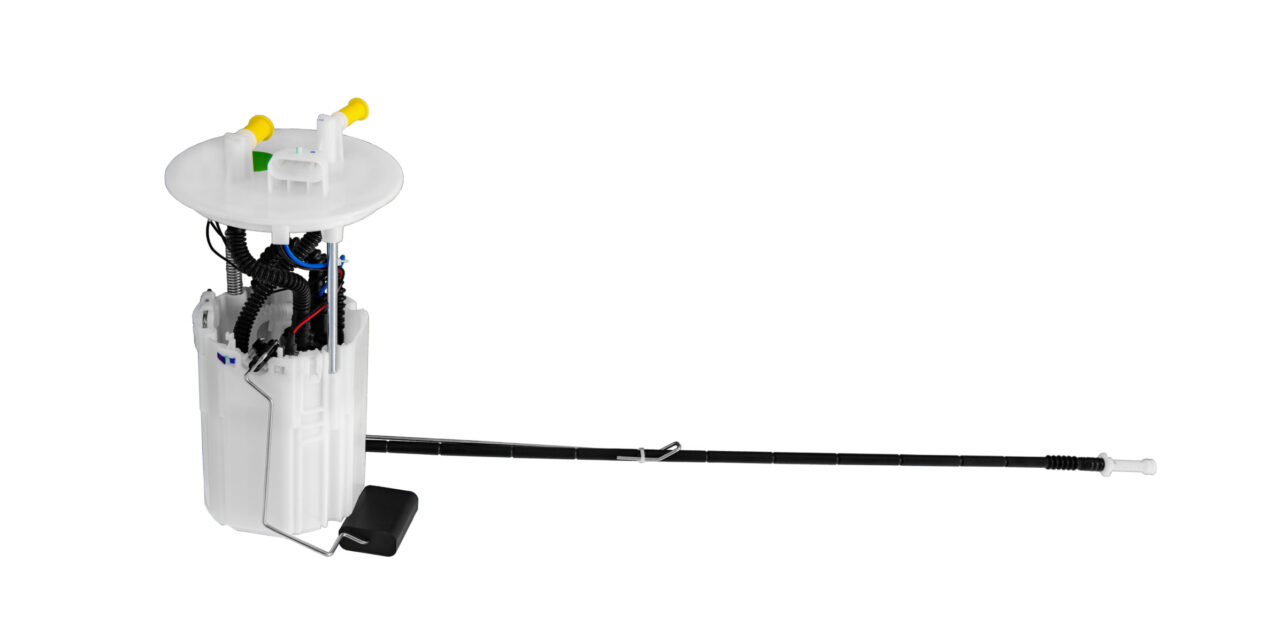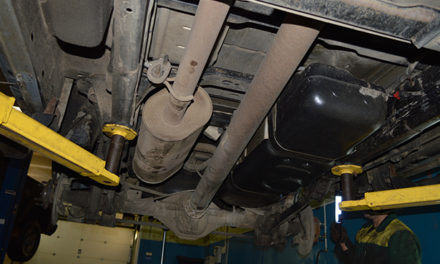The amount of fuel injected into the engine is controlled by the PCM, which activates the injector for a predetermined amount of time. The PCM makes use of several sensors, such as the mass airflow sensor, coolant temperature sensor, and throttle position sensor, to determine the amount of fuel needed for the current load on the engine. The longer the injector is energized, the more fuel is delivered.
Fuel injectors require high fuel pressure (45-60 PSI) in order to operate properly. Normally aspirated (carbureted) engines only require 3-9 PSI. This is sufficient pressure to keep the float bowl full of fuel. The fuel is not under pressure and is drawn into the engine through the engine vacuum.
Symptoms of a Bad Fuel Pump
- The vehicle won’t start.
- The vehicle runs but will not accelerate and stalls at an idle.
Causes of Fuel Pump Failure
- Blown fuel pump fuse
- Bad fuel pump relay
- Plugged fuel filter
- Contaminated sock (filter) on the in-tank pump
- Poor electrical connector at the pump
Diagnosing Procedure
The main tools necessary to diagnose a faulty fuel pump are a volt/ohmmeter and a fuel pressure tester.
Remove the fuel filler cap, and listen for the fuel pump to energize as a helper turns the key to run without trying to start the engine. A good pump can be heard buzzing for two seconds at a time between cycling the ignition key. This is due to a built-in safety precaution. The computer shuts the pump off in two seconds if it does not see the engine running. This prevents the pump from fueling a fire if the vehicle is in an accident. If it can be heard running, the problem is a failing pump, fuel filter, or engine-related mechanical problem.
If the pump could be heard running but the vehicle is showing the symptoms of a bad pump, check the fuel pressure. With the engine off, install the fuel pressure tester on the test port (which looks like a Schrader valve) on the fuel injector rail.
Have your helper turn the key on without starting the engine. Make a note of the fuel pressure, and compare it with the pressure listed in the service manual. If the pressure is too low, replace the fuel filter and retest. If it is still low, you will need to check the voltage at the pump.
If the pressure is correct, the problem is elsewhere.
Check for a blown fuel pump fuse in the main fuse box under the hood.
Locate the fuel pump relay, and place your hand on it as a helper cycles the key on. A good relay can be felt as it clicks on and off. If the fuse and relay are good, power is directed to the fuel pump.
Raise the rear of the vehicle using a jack. Locate the fuel pump electrical connector on the tank. In most cases, there are four wires: two to the fuel gauge and two to the pump. The ones with the largest gauge wire are the fuel-pump feed wires.
Place the black voltmeter lead on a good ground on the frame. With the red positive lead, probe the positive wire terminals while the helper turns the key on. There must be within 0.5 of the battery voltage. If the voltage is low you will need to find the issue within the wires. If the voltage is correct you will need to perform a voltage drop test.
To perform a voltage drop test you will connect the positive lead of the voltmeter to the battery and the negative lead of the voltmeter to the positive wire at the fuel pump connector. Have a helper cycle the key. You should not see more than 0.5 volts drop. Repeat for the negative side.
If you have more than a 0.5-volt drop on either side of the circuit you will need to repair this first. If the voltage is correct, the pump has failed.















![🚙[FITMENT]: Electrical Fuel Pump Module Assembly 2005-2008 for Ford F150 V6-4.2L ;2004-2008 for Ford F150 V8-4.6L ;2004-2008 for Ford F150 V8-5.4L 🚙[WHAT YOU GET]: One set of Electric Fuel Pump Assembly with all you need(fuel pump, strainer and sendi...](https://m.media-amazon.com/images/I/4176uY5xOiL._SL100_.jpg)
Trackbacks/Pingbacks